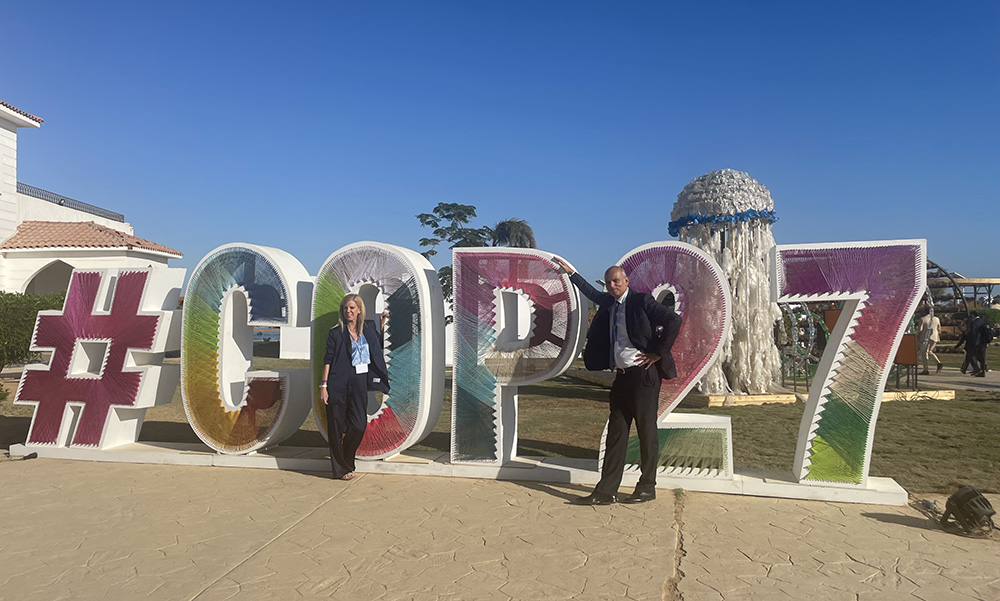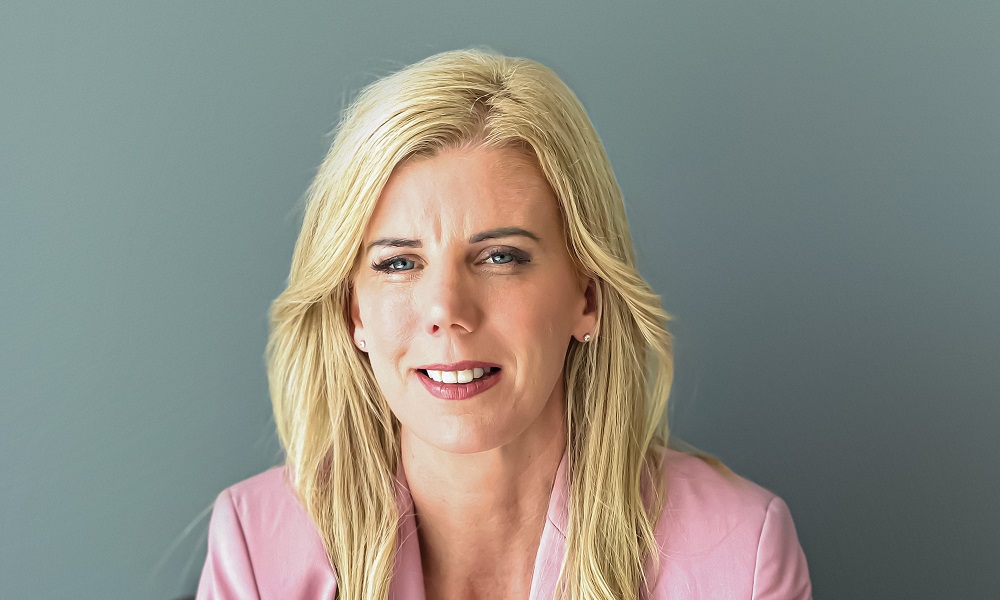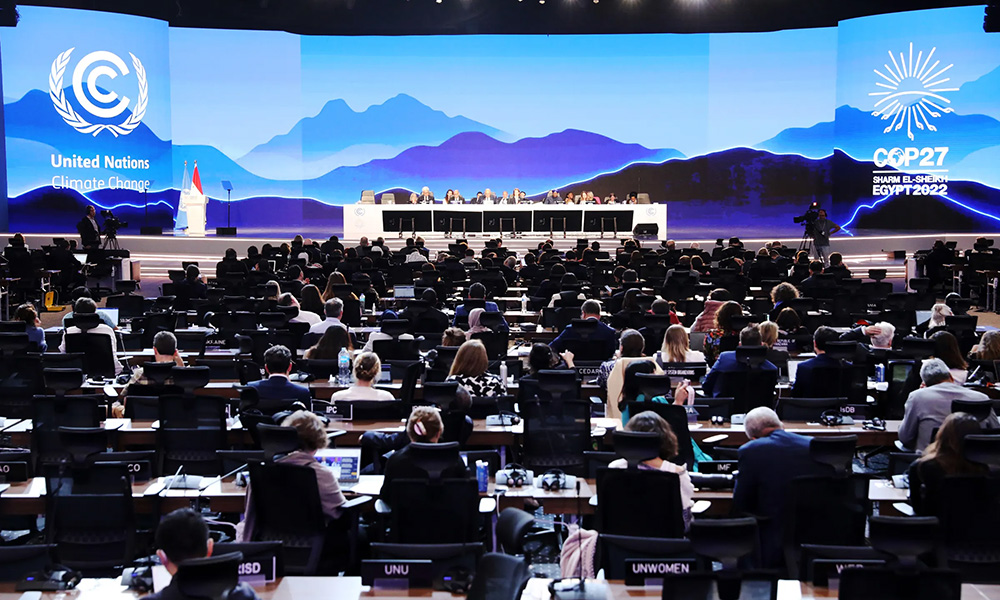JLL’s Louise Collins’ COP27 takeaways and thoughts
Louise Collins, Head of Engineering & Energy, MENA at JLL shares her thoughts and takeaways from COP27 exclusively with Middle East Construction News

This year I attended my first COP event as part of the JLL and UAE delegations, and I had first-time excitement and apprehension. With 200 representative countries participating at COP27, I really wanted to see tangible actions that aligned with the 2016 Paris Agreement.
Going into the global event, the goals were clear for everyone – to avoid the worst consequences of climate crisis, we must hold total temperature rise within the agreed upon 1.5-degrees Celsius temperate limit. This means cutting emissions by 45% this decade and reaching a Net Zero, pollution neutral world by 2050.
On arrival on day 1, it was clear that regardless of political influence, status or job title, everyone on the ground wanted to align with the goals of COP27 and were passionate about decarbonisation. My thoughts were on how can we all work together, and how does decision making and impact flow from policy makers, NGOs, financial institutes, utility providers, corporations and building owners?
The scene was set on Day 1 by John Kerry who said, “It is true that 20 countries – including the United States — are now responsible for 80% of all emissions. It is also true that 48 countries in Sub-Saharan Africa are responsible for only 0.55% of total emissions” and yet “17 of the world’s 20 most climate vulnerable countries are on this continent.” This statement was far from any parity I’d ever known, and I wanted to see what actions these 20 countries were taking and what their commitments would be at this year’s COP, both for themselves and supporting the most vulnerable developing nations.
The resonating roadblocks and challenges from discussions were finance, legislation and innovation. The vast majority appeared to be waiting for their government to implement sustainability legislation before taking any action against the biggest climate disaster ever seen. There were further questions about receiving tax credits, green finance or grants and a mindset of ‘when green concrete is affordable and available, we will transition’ – which will be too late. Even though we are 50% behind on our climate commitment, the vast majority are unfortunately still kicking the can down the road.
Show me the money!
The opening day at COP was finance day and all eyes were on the biggest perceived roadblocks in the world of decarbonisation. How is green finance not significantly cheaper than brown finance? Where can we get the investment to upgrade our building portfolio to transition to Net Zero? Where are all these grants and investments we keep hearing about and how do we unlock it?

The main focus was on supporting countries directly affected by climate change and enabling infrastructure transitions. The climate investments coalition shared assessments of their US $130bn clean energy and climate investment for emerging and developing countries.
NGOs play a huge role in financing climate change grants – Mark Suzman of the Bill and Melinda Gates Foundation spoke about the ability of NGOs to provide grants that financial institutes don’t have the ability to fund at the beginning of a non-profits journey due to risk profiles, and when proved successful, will unlock more formal financing. The World Bank also spoke about the lack of private investment in developing countries being a huge roadblock for banking investment – they also committed $8.5bn to the most vulnerable regions.
My perception of the ongoing issue with finance is that insurers don’t recognise the investment as a way to de-risk potential claims, and investors don’t understand the value of carbon – its a chicken and egg scenario unfortunately. If we don’t invest in resilience however, we will have to pay for the catastrophic outcomes and if we don’t invest in buildings’ decarbonisation, then we will have obsolete assets in a few years (this is an over-simplified statement but fairly true).
Buildings, buildings, buildings
My real focus at COP27 was buildings and I was delighted that this year, the built environment was one of the key themes of COP27 (and for a good reason). With the whole life cycle carbon at an all-time high of 10 GTCO2 in 2021 (up 5% from 2019) and operational demand at an all-time high of 135EJ (a 4% increase from 2019), it appears we aren’t moving forward. The escalation problem is due to a lack of action with existing building stock and that we are building nearly 50m square metres of real estate every week across the world.
The COP27 Buildings Pavilion was hosted by the GlobalABC and the United Nations Environment Program and co-hosted by the We Mean Business Coalition and World Business Council for Sustainable Development. The pavilions hosted events from companies such as Lloyds Bank, Saint Globain, Autodesk all the way through to ARUP, WGBC, JLL and FIDIC. These sessions were interactive, informative and showcased a huge amount of progression in our approach. Although it demonstrated the progressive and transparent nature of these companies, I couldn’t help but feel that many of us are reinventing the wheel in our approach to green buildings – the nature of competition markets I guess – which is why platforms such as COP help in this respect.
The Race to Zero announced that partners from the finance sector totaled 550 financial institutions with $150tn in assets at COP27, with significant growth since COP26 (450 members, $130tn). Furthermore, over 300 interim Net Zero targets were published by COP27 by Race to Zero Partners from the finance sector. The Banking Alliance represents 40% of global banking assets from 41 countries including from developing countries in Africa, Asia-Pacific, Latin America and the Caribbean. This is a significant and tangible commitment from just one industry’s assets, gaining real traction. We need other building sectors to follow.

Changes from COP27
In years past, corporates were not invited to the top table at COP but it is clear that this is changing and that corporates and the private sector have a huge role to play in the transition implementation. There was huge representation from the first ever Youth Envoy in Egypt – their energy, voices and issues resonated across every platform and discussion. They brought a new perspective to old problems, although at times they seemed oversimplified, I did conclude on many issues we had in fact over-complicated the issues overtime, and this fresh perspective should be leveraged.
Aside from the goodwill shown at COP27, there were a few tangible takeaways that impressed me:
- Denmark, Finland, Ireland, Slovenia, Switzerland and Belgium pledged $105mn to fund adaption in developing countries
- Mexico pledged to cut gases by 35% by 2030 – if one of the top 20 emitters and a developing nation can commit to such a huge task, why can’t others?
- Indonesia launched their just energy partnership with $20bn to accelerate their energy transition. Their focus is on hydro and geothermal power
- 250 businesses signed the ‘We Mean Business Coalition’ from a buildings perspective. Those who signed up will half their whole lifecycle carbon by 2030 – these are clear and tangible commitments, which are my favourite!
- Singapore has committed to raise their carbon tax by 16 fold by 2030 – this for me is a way of unlocking finance fast to re-invest in decarbonisation, and I hope see more of it in our region
And the best by far was on closing day with a breakthrough agreement to provide ‘loss and damage’ funding for vulnerable countries hit hard by climate disasters. An array of states, regional governments and development agencies pledged $230mn to the Adaptation Fund to help vulnerable communities around the world adapt to climate change.
What these initiatives demonstrate is that actions can be taken and that everyone is approaching the problem in a different way, but there are lots of lessons that can be taken away from the successes of these and others that have come before.
The UAE’s journey to Net Zero
As expected, Egypt, Saudi Arabia and the UAE had a huge presence at COP27 with notable pavilions and commitments. Earlier this year, the UAE released more ambitious targets of a 31% reduction in GHGs by 2030, and at COP, they officially launched the National Net Zero by 2050 Pathway that will drive the implementation of the UAE Net Zero by 2050 Strategic Initiative. The UAE and Egypt also signed a joint agreement on a wind energy production facility worth $20bn.

The good news is that the next COP event is less than a year away, and with all eyes on the UAE as the host of COP28, you can bet that there will be a huge push on additional commitments made in the last few weeks, with the rest of the Middle East on its coat tails.
Closing thoughts
The COP events are not a magical formula for saving the world, but they do bring us to a point of alignment and measurement every year. Thus, these events enable us to push this important agenda, highlight gaps or failings of commitment and, crucially, open a forum for greater impact. I’m looking forward to keeping the focus on sustainability in the region, and enforcing the fact that nothing is impossible to a willing mind.
Read more:
- Partanna Bahamas and the Government of the Bahamas ink deal to develop “world’s first carbon-negative affordable housing development”
- Accountability for a just transition: COP27 must look beyond emissions
- Trackunit CEO urges increased decarbonisation efforts following CO2 emissions warning at COP27
- EARTHDAY.ORG unveils Climate Education Coalition at COP27 in Egypt
- MOCCAE, EAD and ENWWF ink deal to scale up Nature-based Solutions in a bid to address climate change

























